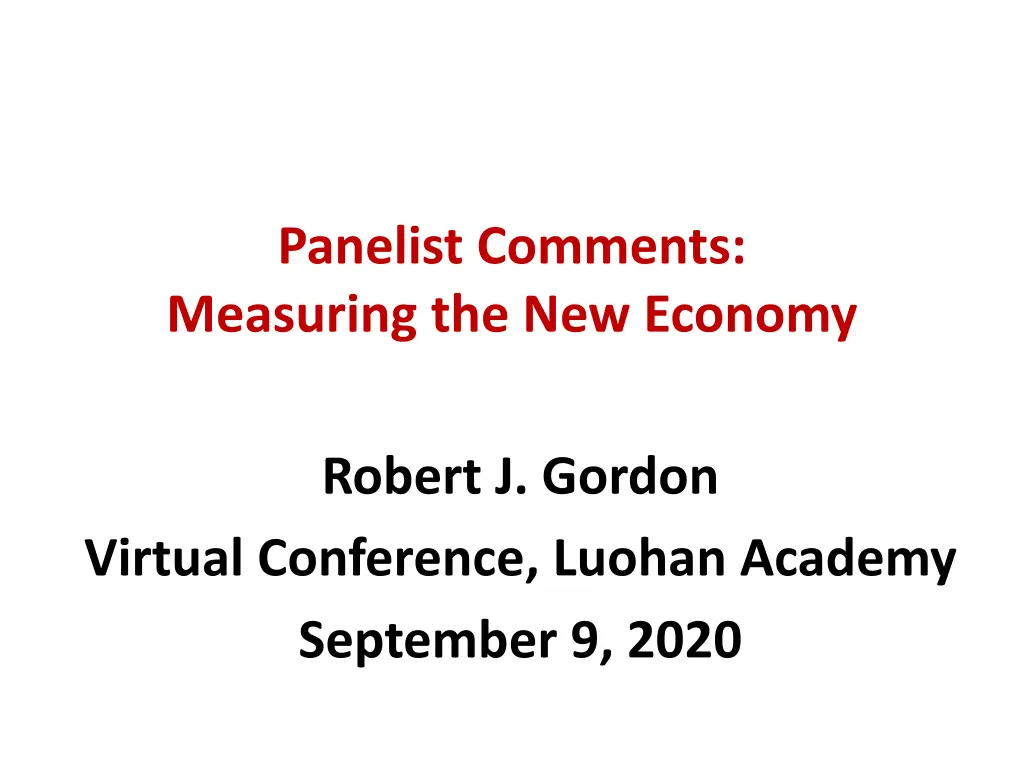
Understanding Productivity Growth Trends in Advanced Economies
Explore the pervasive slowdown in productivity growth since 2005 in advanced economies like the US and Europe. Delve into factors influencing this decline, such as measurement improvements and sector-specific dynamics. Gain insights into the distinct trends observed in the US and EU-10 regions and the contributions of factors like MFP, capital deepening, and labor composition to economic growth.
Download Presentation

Please find below an Image/Link to download the presentation.
The content on the website is provided AS IS for your information and personal use only. It may not be sold, licensed, or shared on other websites without obtaining consent from the author. If you encounter any issues during the download, it is possible that the publisher has removed the file from their server.
You are allowed to download the files provided on this website for personal or commercial use, subject to the condition that they are used lawfully. All files are the property of their respective owners.
The content on the website is provided AS IS for your information and personal use only. It may not be sold, licensed, or shared on other websites without obtaining consent from the author.
E N D
Presentation Transcript
Panelist Comments: Measuring the New Economy Robert J. Gordon Virtual Conference, Luohan Academy September 9, 2020
Pervasive Productivity Growth Slowdown: US and Europe The slowdown in productivity growth in the advanced economies is pervasive since 2005 Can improvements in measurement explain part or all of the slowdown? My study is limited to the U.S. and Western Europe, but Japan and developed East Asia have also experienced slowdowns
Four Intervals for US vs. EU-10, Early-to-Late Slowdown 4.86 5 4 Annual Growth Rate of Output per Hour 3 2.54 2.31 2.17 2 1.26 1.25 1972-95 to 2005-15 Slowdown 0.87 1 0.63 0 1950-72 1972-95 1995-2005 2005-15 -1 1950-72 to 2005-15 Slowdown -1.67 -1.68 -2
Conclusions on EU-10 vs. U.S. EU-10 productivity growth in 1972-95 similar to US 1950-72. Early-to-late slowdown is the same for total economy Also the same for commodity sectors, quite similar for service sectors Big difference is the 1995-2005 revival in the US but no revival in EU-10
Sources of Growth, MFP vs. Capital Deepening vs. Labor Comp. U.S. 1950-72 1.02 1.34 2.54 1972-95 -0.01 1.11 1.25 1995-2005 0.70 1.25 2.17 2005-15 0.17 0.51 0.87 EU-10 1950-75 3.07 1.52 4.76 1972-95 0.92 1.22 2.31 1995-2005 0.27 0.70 1.26 2005-15 -0.02 0.45 0.63 -0.5 0.5 1.5 2.5 3.5 4.5 5.5 Percent per Year MFP Capital Deepening Labor Composition
Sources of Growth Summary US: changing MFP growth explains almost all of the first three intervals, capital deepening steady US: less capital deepening contributes along with MFP to the final slowdown EU-10: steady slowdown is explained roughly equally by MFP and capital deepening Labor composition contribution small but steady
Measurement Issues for U.S. Upward bias in price indexes for computer hardware (insufficiently rapid rate of decline) Nominal share of IT investment in GDP 1999-2000 2.8 2018-19 1.9 Thus with constant bias the mismeasurement of GDP and productivity have declined Byrne et al show bias in labor productivity mismeasurement dropped from 0.4 in 1999-2000 to 0.2 in 2014-2015. Bias in price inexes for semiconductor chips? It s an intermediate good
Three Price Indexes for Computers and Peripherals
Two Issues with Import Price Index for Computers It must be wrong. Imported computers are not getting steadily more expensive than domestically produced If anything, reverse is true Let s say IPI is wrong Replace import price index by GDP price index for computers. No impact on GDP. More investment but more imports (which are subtracted out of GDP) More capital deepening, slower growth TFP
The Stunning Implications of the Import Takeover
Import Penetration in 2011-13 Equals 88% To simplify, say it s 100% That means that computer output is no longer part of GDP Any price index bias is irrelevant for GDP But bias raises contribution of capital deepening to productivity growth Thus reduces contribution of TFP to productivity growth
The Biggest Mismeasurement Issue: Free Internet Services They re not free. Both phone and internet subscription cost money Some research measures value as wage times hours of free internet use Should not multiply wage by time but rather compare the value of internet time vs. previous use of time Radio, television, talking on the phone, playing board games
Further Considerations Consumer surplus produced by smart phones and internet is much greater than increase in business productivity Facebook use outside of production of business goods and services Contribution of phone hardware is imported, not part of GDP. CS not included in GDP is nothing new Running water, indoor plumbing, removal of horse droppings, radio & TV, value of conquering infant mortality and infectious diseases






















